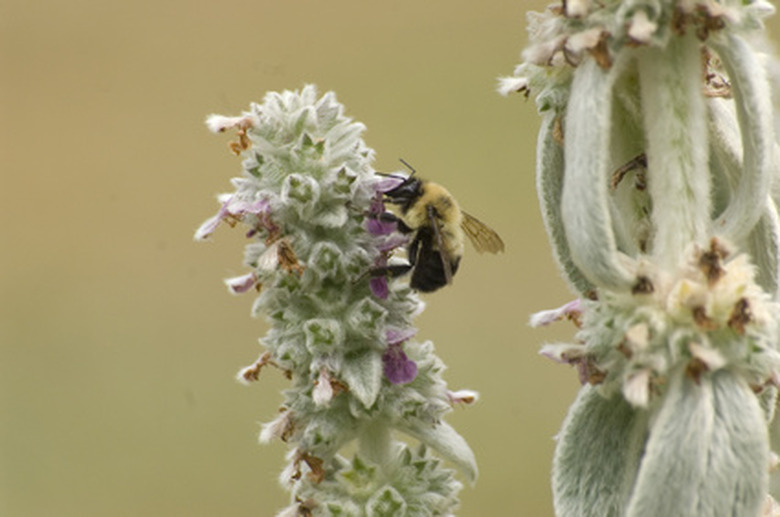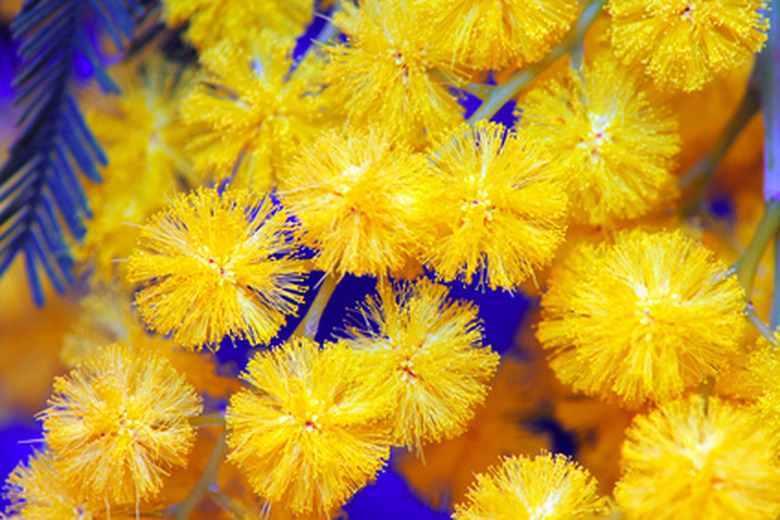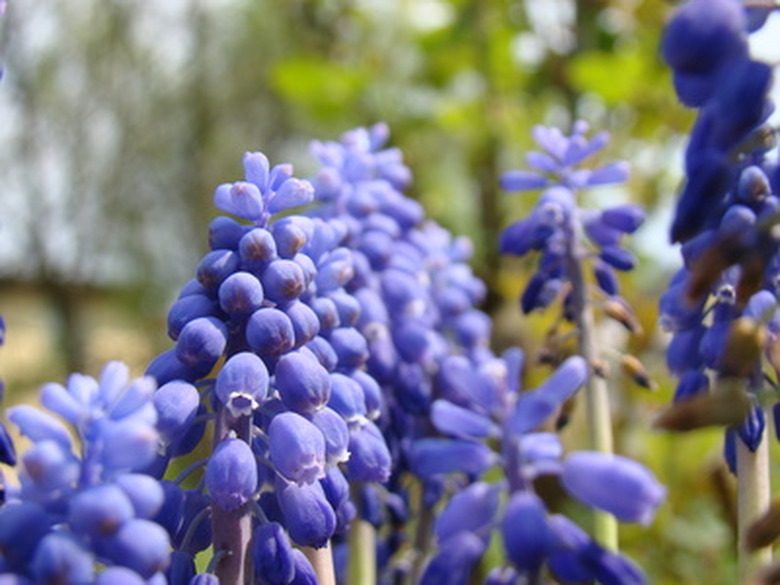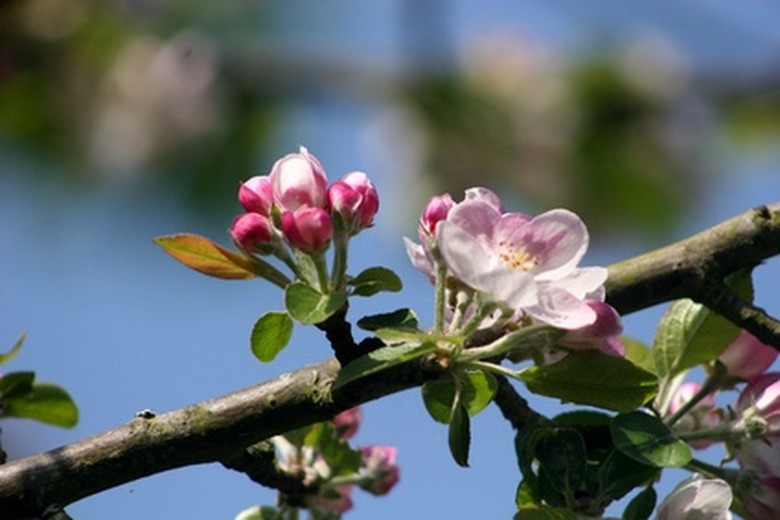Flowers For Mason Bees
Mason bees are unsocial bees that burrow in the ground and in rotting wood. They are a bit smaller than a honeybee and do not make honey. Because they do not make honey, mason bees prove to be docile enough to only sting when stepped on or provoked. Mason bees provide easy pollination for your home garden and landscape plants from fruits and flowers to vegetables and herb gardens. Several flowers benefit from being pollinated by mason bees, especially flowers of yellow, blue and purple tones. Mason bees, like all other bees, cannot see certain colors–red in particular.
Acacia
Acacia flowers are bright yellow and bloom in puffy clusters from the tree of the same name. Mason bees, as well as many other types of flying pollinators, see yellow clearly. This makes acacia flowers extra alluring to them. Acacia trees are considered large weeds or invasive species in many parts of the United States, especially the Southeast; however, having one nearby attracts mason bees for pollinating other plants on your property.
- Mason bees are unsocial bees that burrow in the ground and in rotting wood.
- Several flowers benefit from being pollinated by mason bees, especially flowers of yellow, blue and purple tones.
Canterbury Bells
The delicate, royal-purple blossoms of the Canterbury bellflower attracts a variety of pollinating creatures, including mason bees. Also known as bellflower, it thrives in loamy, dark soil in temperate forest areas, naturally. Growing this flower in your garden to attract mason bees for pollination requires partial shade and plenty of mulch to retain moisture. The scent of the bellflower is sweet, floral and reminiscent of lily of the valley or snapdragon. This sweet, floral scent attracts the mason bees that are after the delicious nectar.
Daisies
Several thousands of species make up this sunflower-related flower family, making up the largest family of vascular plants. Daisies vary in shape, size, color, texture and scent greatly from species to species, but all of them require the pollination of insects and birds. Attracting mason bees with daisies proves to be a simplistic task for even the novice gardener, as these flowers grow adequately during spring in temperate climates. Like the sunflower, daisies don't require super moist soil conditions, in fact they prefer infrequent drinks of water and a layer of mulch to preserve the soil's moisture.
- The delicate, royal-purple blossoms of the Canterbury bellflower attracts a variety of pollinating creatures, including mason bees.
- Like the sunflower, daisies don't require super moist soil conditions, in fact they prefer infrequent drinks of water and a layer of mulch to preserve the soil's moisture.
Attracting mason bees with daisies only requires that you grow appropriate colors–yellow, blue, purple and several varieties of these color tones.
Cross-Pollination
Mason bees offer a boost in cross-pollination of fruit and flower plants, commonly in garden settings. Some of the fruit plants that benefit from mason bee pollination include apples, pears, mulberry, blackberries and raspberries. Mason bees are beneficial to any plant that requires a living pollinator. Cross-pollinating fruits allows you to create different fruits. For example, apples and pears cross-pollinate commonly. This creates a juicier apple.
- Attracting mason bees with daisies only requires that you grow appropriate colors–yellow, blue, purple and several varieties of these color tones.




